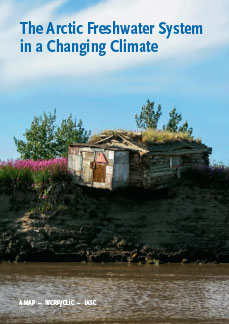Arctic climate change update 2019
New observations confirm continued rapid warming in the Arctic, driving many of the changes underway in the region, including loss of sea ice and glacier coverage, as well as changes in terrestrial and
New observations confirm continued rapid warming in the Arctic, driving many of the changes underway in the region, including loss of sea ice and glacier coverage, as well as changes in terrestrial and
The Arctic has seen rapid sea-ice decline in the past three decades, whilst warming at about twice the global average rate. Yet the relationship between Arctic warming and sea-ice loss is not well understood.
<p>Arctic warming over the Barents–Kara Seas and its impacts on the mid-latitude circulations have been widely discussed. However, the specific mechanism that brings the warming still remains unclear.
<p>The observed decline in Arctic sea ice is projected to continue, opening shorter trade routes across the Arctic Ocean, with potentially global economic implications. Here we quantify, using Coupled

Arctic sea ice appears to have reached a record low winter-time maximum extent for the second year in a row, according to NASA scientists. The new record low follows record high temperatures in December,

The World Climate Research Programme (WCRP) Climate and Cryosphere (CliC) Project, the Arctic Monitoring and Assessment Programme (AMAP) and the International Arctic Science Committee (IASC) have released
<p>Climate projections of sea ice retreat under anthropogenic climate change at the regional scale and in summer months other than September have largely not been evaluated. Information at this level of
Sea ice impacts most of the Arctic environment, from ocean circulation and marine ecosystems to animal migration and marine transportation. Sea ice has thinned and decreased in age over the observational
<p>Plastic, as a form of marine litter, is found in varying quantities and sizes around the globe from surface waters to deep-sea sediments. Identifying patterns of microplastic distribution will benefit
<p>We examine the response of Arctic sea ice to projected aerosol and aerosol precursor emissions changes under the Representative Concentration Pathway (RCP) scenarios in simulations of the Canadian Earth
Measurements of sediments eroded by the Mackenzie River reveal the widespread export of permafrost-derived biospheric carbon that is several thousand years old, and demonstrate its burial in the Arctic